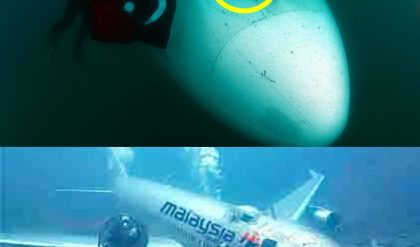
The mysterious disappearance of Egyptair flight 804 has baffled the world for 50 years. Vanished without a trace in 2024, the case has been the subject of countless theories and speculations. Today, in an unprecedented breakthrough, experts have finally unveiled the truth behind this enigma, explaining why the flight and its passengers were lost at sea for half a century without being detected.
On May 19, 2024, Egyptair flight 804 was en route from Paris Charles de Gaulle Airport to Cairo International Airport. It was a routine flight, carrying 66 passengers and crew. However, in the early hours of the morning, the plane suddenly disappeared from radar over the Mediterranean Sea. Despite extensive search and rescue operations, no wreckage was found, and no distress signals were received. The disappearance left families devastated and the aviation community searching for answers.

The initial theories ranged from a catastrophic technical failure to terrorist activity. Investigations focused on the plane’s last known position, with search teams scouring the Mediterranean. Despite their efforts, no significant debris was recovered, and the cause of the disappearance remained a mystery. As years turned into decades, the case faded from the public eye, becoming one of the many unsolved mysteries of aviation history.
In a remarkable turn of events, recent advancements in underwater exploration technology led to the discovery of flight 804’s wreckage. A team of marine archaeologists, using state-of-the-art autonomous underwater vehicles (AUVs), stumbled upon the remnants of the plane at a depth of 3,000 meters, approximately 150 kilometers off the coast of Crete. This discovery reignited interest in the case and provided crucial clues to unravel the mystery.

Detailed analysis of the wreckage revealed that flight 804 had not suffered a catastrophic failure or been the target of terrorism. Instead, it had encountered an extremely rare and little-understood natural phenomenon known as an “oceanic rogue vortex.” This powerful underwater vortex, similar to a tornado but occurring in the ocean, can generate immense forces capable of pulling objects, including large aircraft, down to the seabed.
Oceanic rogue vortices are typically transient and localized, making them incredibly difficult to detect and study. In the case of flight 804, the vortex had likely formed due to a combination of unusual weather patterns and underwater topographical features. Once the plane was caught in the vortex, it would have been rapidly pulled to the ocean floor, leaving no time for the crew to send a distress signal.
One of the most perplexing aspects of the disappearance was why the wreckage remained undetected for so long. The location of the crash, combined with the depth of the ocean at that point, played a significant role. The Mediterranean Sea, while not as vast as some of the world’s oceans, has numerous deep trenches and complex underwater landscapes. The wreckage of flight 804 was buried under layers of sediment, further obscuring it from sonar scans conducted during initial search efforts.






